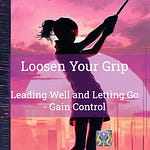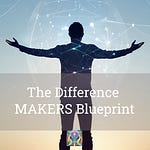Have you ever stood frozen in front of a wall of choices, uncertain, overwhelmed, quietly panicking? I remember the first time my wife asked me to buy tampons. A simple task, undone by endless options. Today’s world feels like that too. We scroll Netflix for an hour and watch nothing. We swipe through dating apps without connection. We face endless job options and still feel lost. More choice doesn’t bring more freedom. It often brings paralysis. Nathan’s story begins here. His “open system” stifled action. Romans 12:3 reminds him who he really is, and what good leadership must make possible.
Motivate
Why should you care about choice architecture? In "Seven Steps to One Click," Nathan learned that despite his good intentions, his complex innovation process created barriers rather than opportunities. The same principle applies to any leadership situation: the environment you create either enables or inhibits desired behaviours.
As Nathan discovered, even a well-designed process can fail if it requires too much effort from participants. When he reflected honestly on Romans 12:3 about thinking of himself "with sober judgment," he realised he had created a system that worked for him but not for others.
Choice architecture affects every area of your leadership: team engagement, project participation, communication effectiveness, and even your own habit formation. By understanding how to structure choices, you can lead more effectively with less resistance.
Acquire Knowledge
What is choice architecture? Choice architecture refers to the way choices are presented and how that presentation affects decision-making. Key principles include:
Default options matter tremendously - most people accept whatever option requires no action
Reducing friction increases participation - every step, click, or field reduces completion rates (For evidence look at Amazon.com)
Visual prominence guides attention - what stands out gets noticed and acted upon
Limited options prevent decision paralysis - too many choices can lead to no choice at all
Social proof influences decisions - showing what others are doing encourages similar behaviour
In the story, Nathan's transformation came when he learned: "Choice architecture isn't about forcing people to make the 'right' choice. It's about making the beneficial choice the easiest one to make."
Research in behavioural economics shows that small changes in how options are presented can have dramatic effects on outcomes, without restricting freedom of choice.
Knowledge Application
How can you apply choice architecture principles? Start by examining one team process or initiative that isn't generating desired participation:
Map the current journey - Follow the exact steps someone must take to participate
Identify friction points - Note every place where effort is required or confusion might occur
Count the steps - The more steps, the fewer people will complete the process
Question necessity - For each requirement, ask "Is this truly essential?"
Consider defaults - Could participation be the default, requiring opt-out rather than opt-in?
Like Nathan's sticky note reminder to "Make the right choice the easy choice," create your own trigger to examine processes through this lens. Before implementing any new initiative, ask: "How can I remove friction here?"
Empower
What specific steps can you take this week? Choose one initiative or process to redesign using choice architecture principles:
Simplify to one step - Can you reduce initial participation to a single action?
Create visual triggers - Design prominent visual cues that draw attention to desired actions
Set helpful defaults - Change opt-in to opt-out where appropriate
Show progress - Make participation visible to create social proof and momentum
Celebrate early adopters - Publicly recognise those who engage, encouraging others to join
Remember how Nathan completely redesigned his innovation process overnight? You don't need to overhaul everything at once. Start with one important process where participation matters most.
As Nathan learned when he distributed authority to innovation squads, empowering others is itself a form of choice architecture—making it easier for your team to act independently rather than waiting for your approval.
Review
How will you know if your changes are working? Ask yourself these questions:
Has participation increased since implementing your changes?
Where are people still dropping out of the process?
What feedback have you received about the revised approach?
Are you still holding onto unnecessary controls or steps?
Have you truly made the beneficial choice the easiest choice?
Nathan's moment of honest self-assessment came when he looked at his innovation portal through fresh eyes and saw a "bureaucratic nightmare." Schedule time to review your own processes with the same critical perspective.
If participation hasn't improved, look deeper at remaining friction points. Remember Nathan's realisation that he himself had become the bottleneck in implementation and needed to distribute authority.
Share
How can you help others benefit from choice architecture principles?
Share your experience - Tell your team about changes you've made and why
Coach other leaders - Help colleagues identify friction in their own processes
Spread the concept - Introduce choice architecture principles in your next team meeting
Gather success stories - Collect examples of how simplified choices improved outcomes
Create a resource - Develop a simple checklist others can use when designing processes
In the story, Nathan ultimately presented his learnings to the entire company, explaining: "The secret wasn't in creating a perfect system. It was in creating the right environment—one where contributing felt natural and rewarding."
By sharing your journey with choice architecture, you can help create an organisational culture that values ease of participation over complex processes—just as Nathan did when he transformed not just his innovation initiative, but his entire approach to leadership.
MAD Coaching Habits - Thank You for Your Support
We're excited to bring you MAD Coaching Habits, thanks to the incredible support of partners like you. Your generosity makes it possible for us to continue offering these resources to everyone.
We'd also love to hear from you! Share your thoughts and experiences in the comments—your feedback truly warms our hearts.
Thank you for being a vital part of our community!













